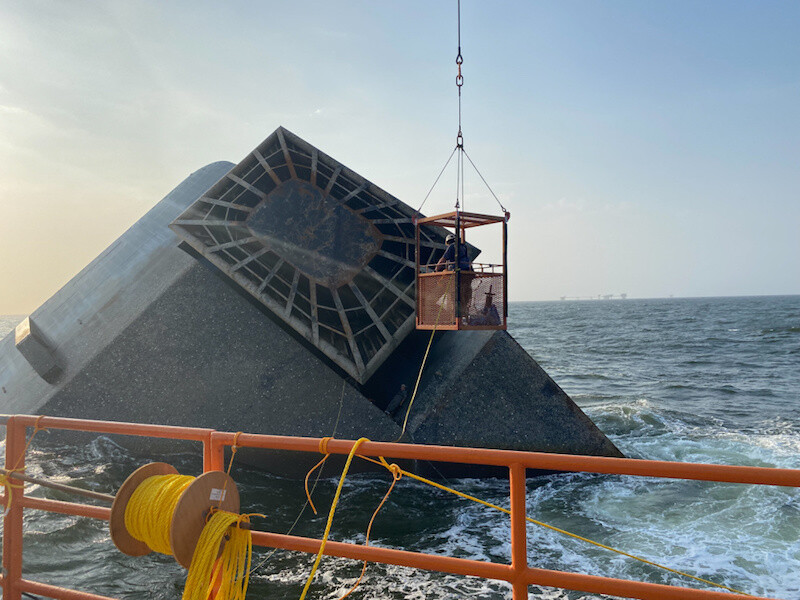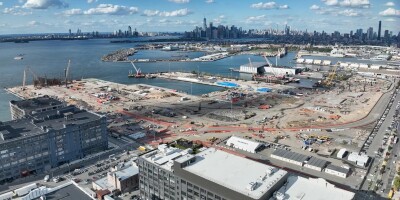An independent contractor aboard the liftboat Seacor Power said he was unaware of any weather warning the day of the accident. There were 19 people aboard the 265-class liftboat Seacor Power when it left Port Fourchon, La., heading for a Talos Energy shallow water platform on the afternoon of April 13. The boat was flipped over in a storm about eight miles from shore, killing 13 of the 19 onboard, including the boat’s captain David Ledet. The liftboat is owned by Seacor Marine.
A Coast Guard hearing into the accident began yesterday in Houma, La. One fact that came out at the hearing was a weather warning that was issued at 12:08 that afternoon. Seacor Power left port about 90 minutes later. In testimony Dwayne Lewis, an independent contractor working for Talos Energy was asked if he was aware of the weather warning that day.
“No,” was his reply.
A small but intense low-pressure system, known to meteorologists as a wake low, passed through the area on the afternoon of the incident, creating hurricane-force winds of 80-90 mph and seas offshore of 7' to 9'. Though bad weather had been forecasted, the intensity of the storm took everyone by surprise.
The 265-class Seacor Power is a three-legged liftboat with a 49'x29'x5' working pad. It has a cargo deck capacity of 491 LT and a clear area of 11,000 sq. ft. It is outfitted with two cranes, port and starboard, each 185-ton capacity with 120' boom.
Lewis testified that he was sleeping when the storm hit. He was awakened, “when the boat rolled,” he said. Now trapped and unable to leave by the doorway, his only chance was the window in his cabin. Along with another of those onboard, the two men used a fire extinguisher to break the window and get out.
Lewis was in the water for about three hours before being picked up by a shrimp boat. “I said please calm the seas. It’s something when you talk to your dead mother to say you’re not ready to see her yet.”
Lewis was asked if there was a recommendation he would like to make, and he said, “Latching perhaps. Or anything to help break that window.”
Tuesday's hearing testimony touched on a number of areas such as stability, loading cargo onto a liftboat. There seems to be a question as to whether it's better to ride out bad weather on a liftboat at the dock or at sea with your legs down and your keel jacked up.
The Coast Guard and National Transportation Safety Board are investigating. A preliminary NTSB report released in May said the boat’s pilot turned the liftboat Seacor Power into the wind during a squall while the vessel’s legs were lowering, but the move couldn’t keep the boat from capsizing.
NTSB investigators learned that at about 3:30 p.m., as the Seacor Power transited the open waters of the Gulf, a squall passed over the liftboat. With visibility dropping and winds increasing significantly, the crew decided to lower the liftboat’s legs to the seafloor to hold the vessel in position until the storm passed. The crewmember at the helm attempted to turn the Seacor Power into the wind as the legs began to descend. Before the turn was completed, the liftboat heeled to starboard and capsized.
NTSB investigators also learned several people were able to escape onto the exposed, port side of the deckhouse. High winds and seas that had built to 10' to 12' prevented rescuers from reaching those who remained on the liftboat. Some were washed into the water and six were eventually rescued, with one survivor suffering a serious injury.
NTSB investigators have interviewed survivors, other personnel who previously crewed the Seacor Power, representatives for the owner and charterer, vessel inspectors and surveyors, and search and rescue responders.





